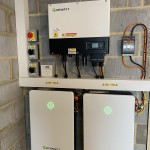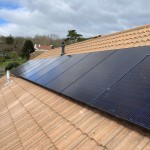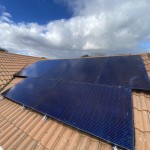
Project Details
Premises and Structure
The Church dates from the 12th Century and generally of a stone structure with the main entrance, Narthex, Clergy Vestry, Store and Bell tower being of a wooden construction. The walls of the main church area are of solid construction and approximately two feet thick. There are two pillars to the right hand side of the Nave when facing the Chancel which support arches between the Nave, Baptistry and South Chapel. The height of the Nave and Chancel would make a convection style heating system inappropriate for the building due to the heating working from the top of the ceiling downwards to the floor and seating area. There is evidence of damp throughout but mainly in the Chancel. The windows are lead light and stained glass without any secondary glazing. The floor is solid stone construction.
Remit
To design and install a heating system capable of raising the temperature to a level where the congregation will be comfortable without the need to remove outside clothing, target temperature 16 to 18 degrees C. The system is not to produce greenhouse gases during its operation and is to be able to be powered by renewable electrical energy from a green tariff. The system is to be of a Zero light output for the heat produced and to be as unobtrusive as possible.
Considerations
The installation of modern technology and new equipment within a Church will not be welcomed by all the congregation, the aesthetics of the building and maintaining a traditional look is important to many of the Church community. This must be balanced with the comfort of all the Church members and visitors allowing them a comfortable environment for the duration of their visits.
Solution
In order to preserve an unrestricted view of the altar and stained glass window while achieving a comfortable heat in a short period of time a design using Herschel Halo Heaters for the Nave was produced. these have the advantage of being able to be mounted at a high level, in this case at five meters. this ensured that the view of the Altar was not compromised and the heat in the Nave was a comfortable 20 degrees Celsius after thirty minutes allowing the heaters to be switched down to a lower power level and maintain the temperature.
In the side aisle and small chapel an instant heat was required as they are used for smaller gatherings or congregation and it was achieved by the use of short wave infra red Colorado heaters allowing people in these areas to feel the warmth the moment the heaters are turned on.
The Vestry required a comfortable heat in order for the Church warden to be comfortable when conducting the Parish business, this was achieved by the use of two white far infra red heating panel being mounted on the ceiling covering the desk and working areas.
Our Solution
In order to preserve an unrestricted view of the altar and stained glass window while achieving a comfortable heat in a short period of time a design using Herschel Halo Heaters for the Nave was produced. these have the advantage of being able to be mounted at a high level, in this case at five meters. this ensured that the view of the Altar was not compromised and the heat in the Nave was a comfortable 20 degrees Celsius after thirty minutes allowing the heaters to be switched down to a lower power level and maintain the temperature.
In the side aisle and small chapel an instant heat was required as they are used for smaller gatherings or congregation and it was achieved by the use of short wave infra red Colorado heaters allowing people in these areas to feel the warmth the moment the heaters are turned on.
The Vestry required a comfortable heat in order for the Church warden to be comfortable when conducting the Parish business, this was achieved by the use of two white far infra red heating panel being mounted on the ceiling covering the desk and working areas.



